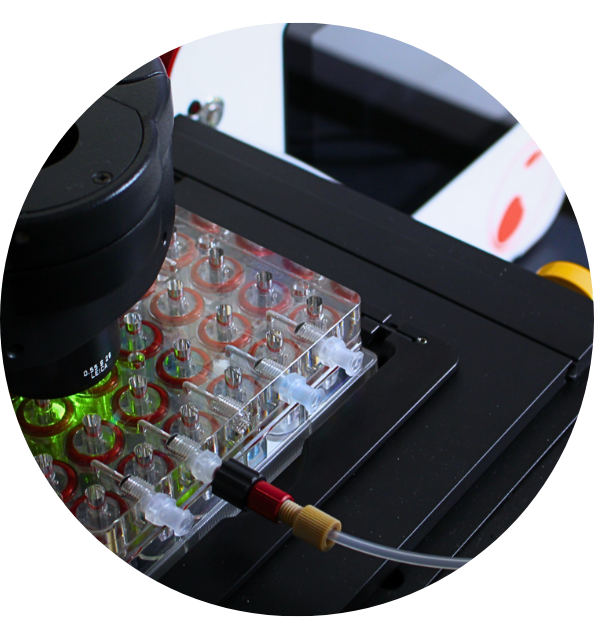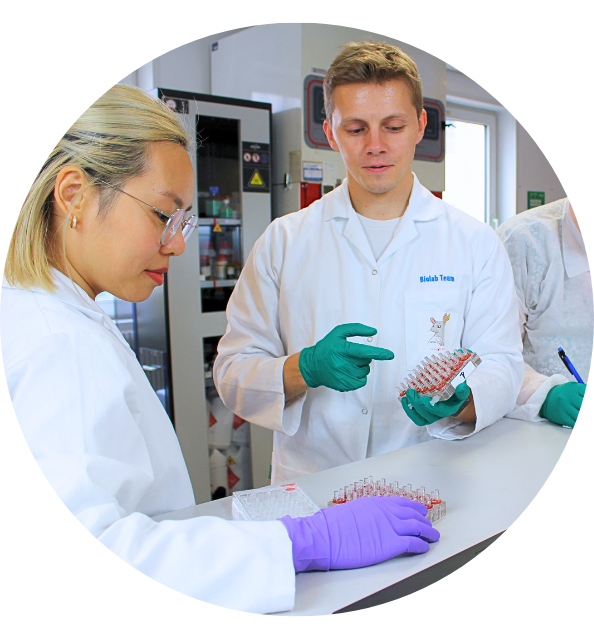C. elegans mitosis control with thermosensitive mutants
An example using CherryTemp™ for fast and accurate temperature switch during microscopic observation.
During C. elegans embryo division, the CYK-4 protein is required for the completion of cytokinesis (but not to form a furrow or initiate ingression). At the “permissive” 16°C temperature, the CYK-4 protein is functional but over 25°C it becomes inactivated. Such a mutant is called “thermosensitive”.
During our experimentation, C. elegans thermosensitive embryo mutants (CYK-4 ts) were examined under the microscope with a CherryTemp platform. This system allowed to selectively modify the temperature of embryo samples between 16°C and 25°C resulting in cytokinesis blocking. Fig 1 shows unprecedently observed phenomenon during cell division.
CherryTemp offers unique properties to get the best tuning of C. elegans samples temperature and obtain results that could not be observed otherwise!

Figure 1.
C. elegansCYK-4thermosensitive mutant embryoswere shifted from 16°C to 25°C. Dividing embryosat 16°C (blue bar) underwent cytokinesis arrest after shift to restrictive temperature (25°C, CYK-4 inactivation) (red bar). White arrows indicate cleavage furrow ingression and regression respectively.
Courtesy of Julien Dumont (Dumont lab, Institut Jacques Monod, France)

Discover the CubiX
Emulating human cell & tissue physiology


